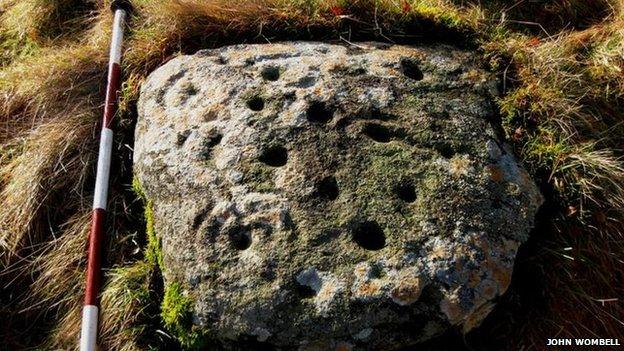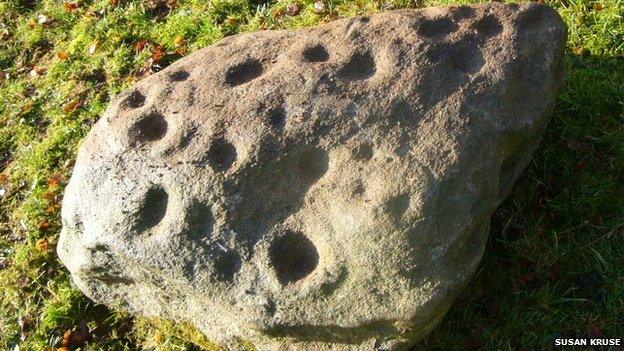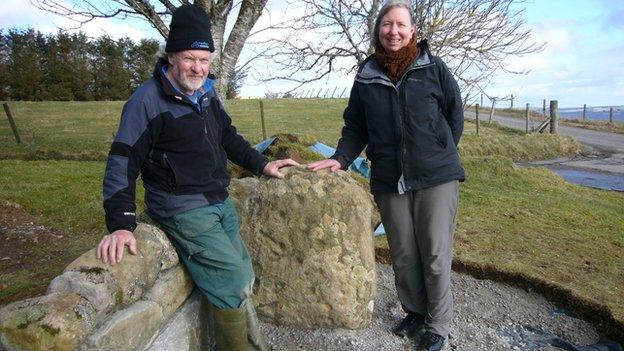Rare Neolithic or Bronze Age rock art in Ross-shire
- Published

The rock decorated with cup and ring marks
A rare example of prehistoric rock art has been uncovered in the Highlands.
Archaeologists made the discovery while moving a boulder decorated with ancient cup and ring marks to a new location in Ross-shire.
When they turned the stone over they found the same impressions on the other side of the rock. It is one of only a few decorated stones of its kind.
John Wombell, of North of Scotland Archaeological Society (NOSAS), said: "This is an amazing discovery."
Susan Kruse, of Archaeology for Communities in the Highlands (ARCH), first discovered the stone at Heights of Fodderty several years ago when out walking.
The second set of cup and ring marks were uncovered recently when archaeologists were moving the stone to a new site at nearby Heights of Brae Neil Gunn Viewpoint.
From the Neolithic or Bronze Age, the art was created between 4,000 and 5,000 years ago.

The newly-discovered markings on the opposite side of the stone
Archaeologists believe the markings may have been made for a number of reasons.
These include for rituals, as territorial markers or mapping the stars. They could even be the "doodlings" of bored, ancient shepherds.
Ms Kruse said: "Finding cup and ring decoration on the opposite side has raised a number of tantalising questions.
"Was the decoration meant to be viewed from both sides or was one decorated side deliberately placed face down?
"Or was the stone carved at different times?"

John Wombell and Susan Kruse with the stone at its new location
Mr Wombell, who is leading a project to record rock art in the Highlands and Grampian, said it was an important discovery.
He said: "Although some stones are decorated on different faces, I only know of a few other stones with decoration on opposite sides."
The archaeologist said most boulders with markings were too heavy to turn over to find out if they were decorated on the reverse side.
The stone in the new discovery was moved by crofters about 200 years ago when they used it for building a dyke.
There is a cluster of rock art in the local area.
A Neolithic chambered burial cairn and round houses dating to the Bronze and Iron Ages have also been found.
Another major discovery in the area was the Heights of Brae hoard, the largest surviving late Bronze Age gold find in Scotland.
A farmer uncovered the jewellery while ploughing a field in the 1960s.